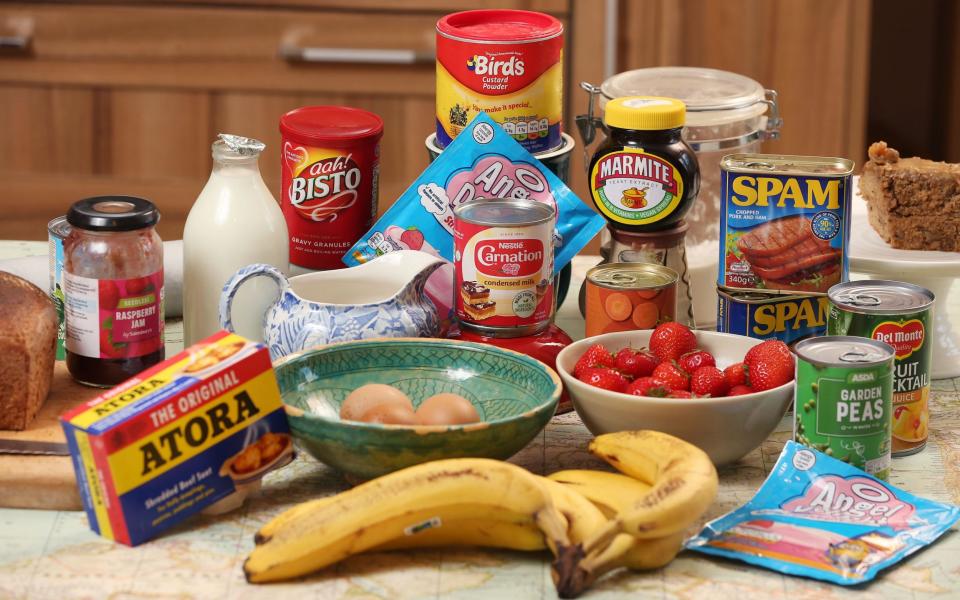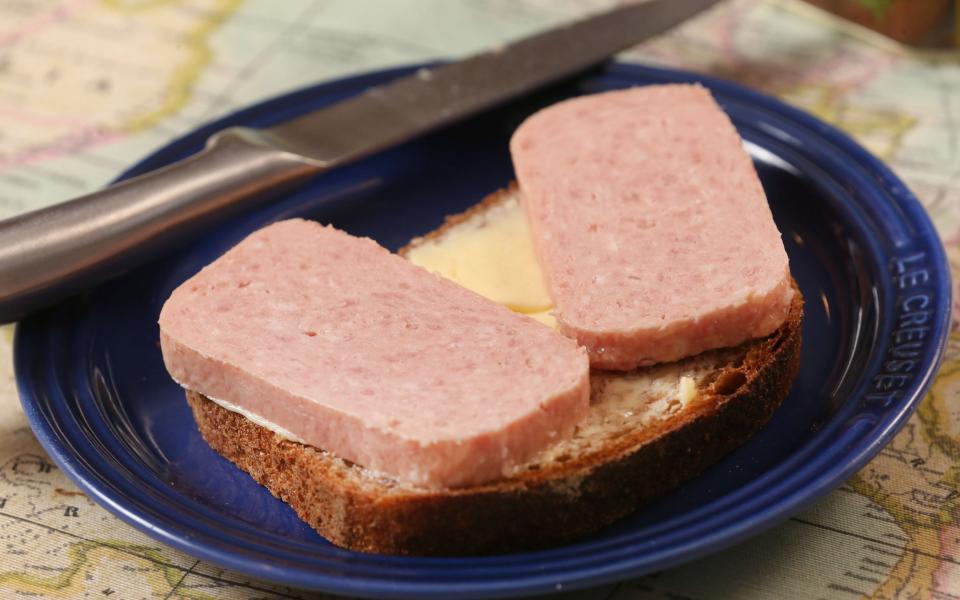It’s one of the hottest days of the year so far, but my oven is on and blasting. Inside there is a section of beef and a tray of roast potatoes dripping off the beef. My Yorkshire pudding is ready to go; bubbling away on the stove is a pan of rice pudding, next to a few tins of peas and carrots, ready to be heated up.
It’s a bit counter-cultural, because of the rising temperatures, but then there was mine last week. I’ve just spent seven days eating like I was in the 1960s – roast beef, tinned vegetables and all – to see what the health benefits might be. And while there are some things I will not continue in my life in the 21st century (lack of fresh vegetables and toast at almost every meal), there are other habits that I will definitely.
They were clearly doing something right. In the 1960s only 1 per cent of men and 2 per cent of women in England were classified as obese compared to 25.2 per cent of men and 26 per cent of women today.
In the late 1950s, the average man was just over 10 stone (65kg) and the average woman weighed 8 stone 6 pounds (55kg). By 2021, the average man and woman reported weighing 13 stone 4lb (85.1kg) and 11 stone 3lb (71.8kg), respectively.

Although there was still considerable division between rich and poor families, the 1960s were, as social historian Professor John Burnett has shown in his pioneering work. Plenty & Want: A Social History of Food in England from 1815 to the Present Day, the “robust years” – post-war rationing was becoming a distant memory and the recession of the 1970s still lingered.
For the most part, most working people ate reasonably well: Britons in the 1960s drank more milk a week – 4.84 pints per person on average – spread more butter on their toast, ate more eggs, they ate more sugar and they ate more meat. than their peers in 1950 or 1974. Their consumption of fresh fruit and green vegetables was also higher, although they ate fewer fresh vegetables overall. This was, after all, the beginning of convenience foods and the age of the tin can.
Meat and two vegetables and family mealtime
As a middle-class professional family, where my husband would go to work every day and I would be at home looking after the house, my family would eat three main meals a day: breakfast, lunch and dinner, plus a . light snack at 11am and again at 4pm. Some families would also eat ‘supper’ before going to bed – again, a light snack in the evening. “Snacking didn’t happen like it does now, but you could legitimately sit down in the middle of the morning, especially as a woman in the 1960s,” says food historian Dr. Annie Gray, author Call the Midwife Cookbook, which revolves around 1960s recipes. For my husband in the office, meanwhile, “this is still the era when the tea trolley came around twice a day.”


Perhaps the biggest difference between then and now, however, is firstly the type of food people ate, and secondly, how much of it. Although sugar consumption was much higher than it is today (an average of 17.76 oz, or 503g per week per person, compared to the 1.8kg consumed per person per year now) there was very little processed food. Wait, yes, UPFs, definitely not. And while this was the decade when breakfast cereals became popular (Coco Pops launched in 1961 and Ready Brek in 1957), more adventurous crisp flavors emerge to tickle the palette (Golden Wonder launched Ready Salted in 1960 and Cheese & Onion in 1962) and the invention of Angel Delight, in 1967, the reality is that these were occasional and exotic treats.
Today we get 57 percent of our calories from ultra-processed foods, while in the 1960s we had very little intake.
Bread and butter, potatoes and suet pudding
Most of the food was quite simple, of the meat and two vegetables variety, and cooked from scratch. Starchy carbohydrates – potatoes, bread, suet pudding – which you filled up freely, were a staple on any menu; it was mostly red meat (chicken was a luxury) or processed (sausage, ham and Spam) and that was not called leftovers, it was just the next meal; especially since not many households in Britain, certainly in the early 1960s, had refrigerators.


Even by 1968, 50 percent of households did not have one. Vegetables came in tins or were what you grew or could get at the green grocer: peas, carrots, cabbage, scallops (not courgettes). “Broccoli wasn’t invented” said my 77 year old father. There was always pudding – usually something with custard – but it came at the end of a main meal; My mother remembers being allowed to eat a simple cake at teatime during the week, but only after a slice of bread and butter.
Portion sizes were smaller, however; the average plate size was 23 centimeters and the modest bowls were 7 inches in diameter. In contrast, the average size of many of our foods today has increased by up to 138 per cent according to data from the Council. American Journal of Public Healththe diary Nutrition and the Journal of the American Medical Association. A serving of meat would be around 100g, and the lion’s share would go to the man of the house, leaving a woman like me with even less – my 1.5kg cut of beef turned into three meals for our family of four.
And people were less restless then: as a housewife I would be on my feet shopping, cooking or cleaning most of the day, and traveling on foot or by bus rather than by car. In 1967, more than three-quarters (77 percent) of adults said they walked for at least half an hour each day compared to 42 percent in 2010.
What happened when I tried a diet in the 1960s
My eating week in the 1960s had its ups and downs. I started on Sunday with a cooked breakfast, albeit a modest one: a slice of bacon, a piece of fried bread (fried in beef dripping) and a cup of tea. The main event, of course, was the Sunday lunchtime roast, and despite my modest portion, I was too full to eat more than a few slices of bread and jam for supper, which would normally have been enough in the sixties. .


Monday leftovers: a few roast potatoes, some of the vegetables and gravy, plus a slice of bread and butter for lunch; cold roast beef and baked potatoes with salad for supper, enlivened with a tin of peaches and chopped banana topped with condensed milk for pudding; On Tuesday I turned the last bit of beef into potted beef to go on sandwiches.
Although I probably cooked the main meal at lunchtime in the sixties when my husband and children came home to it, practical things meant that I changed it during my test week: most days breakfast was toast with an egg boiled or with butter and Marmite. Lunch was whatever was left over from the night before, maybe with a piece of bread and butter to put it together. Supper, which we all ate together around 6pm, was the main event; whether it was spaghetti hoops on toast (Heinz was big in the sixties) with roly poly jam and custard for after; potato and onion pie followed by rice pudding or toad in the hole with leftover tinned peas and some tinned fruit cocktail and custard for dessert.


There were a few treats: coffee (small size) and walnut layer cake for my Dad’s birthday (made according to a sixties recipe, minus the Camp Coffee flavour, where I had to improvise with Nescafé) and fish and chips on Friday, which would be ubiquitous in most households, but gone was the mid-morning latte from a coffee shop or a glass of wine with dinner.
The experience surprised me at first. I don’t usually eat breakfast, but I found that having some toast or an egg meant I wasn’t as hungry at lunchtime and was happy with my smaller portions. I wouldn’t expect three cold roast potatoes and a handful of tinned peas doused in Bisto to count as a satisfying lunch.
I also got less hungry in the afternoon. By early evening I was ready for my dinner, but I wasn’t hungry – and even on a ‘merciful’ day I was perfectly happy to eat only the one sausage and a small portion of master (I dug a plate vintage of an appropriate size to keep my portion sizes) – and pudding at the end always rounds things off nicely. The scales even looked like I had lost a pound and a bit, which was unusual given the amount of carbs I was consuming.


By the fifth day, however, I’d hit a bit of a wall: I was getting more sluggish in the morning, with terrible breath, and I was craving salad and lean protein. “My main criticism of the diet is the lack of fresh fruit and vegetables, which are so important for good nutrition and gut health,” says The Telegraphand nutritionist Sam Rice, who looked at my menu for the week.
“There is very little variety in plant foods and nowhere near the modern recommendation of eating 30 different plant foods a week. It’s also low in complex carbohydrates, again from fruit and vegetables, as well as whole grains, beans, lentils, nuts and seeds.” Rice also suggests a lack of omega-3s from oily fish, and saturated animal fat most of the fat I’m eating other than the healthier monounsaturated fats found in olive oil, avocado and nuts.
By the end of the week, I’d definitely be happy to never see another slice of bread and dip again, sick of the jam scene. The weight I thought I had lost came back again, minus a tiny bit.
But there are some things I will put out. Smaller sizes to start with – I’ll stick to the sixties dinner plate. Nescafé with milk from a carton is a very respectable (and much cheaper) alternative to a calorie-heavy latte for everyday drinking, and a glass of wine is preferable as an occasional treat (I won’t be switching to sherry). My kids would also be happy to continue the daily pudding ritual.
But I’m very happy to have a fridge, and access to a wide range of fresh fruit and vegetables. And Spam will never have a place in my kitchen cupboard.